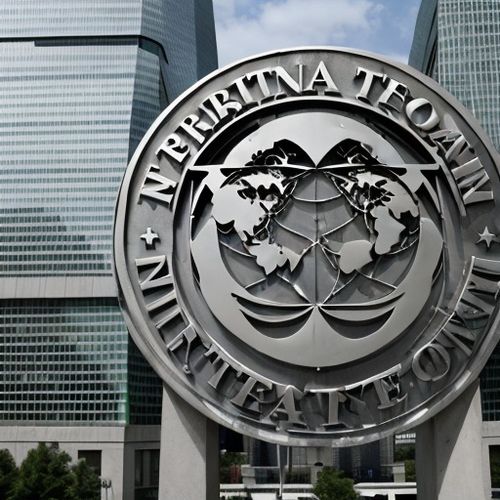The internationalization of the Chinese yuan, also known as the renminbi (RMB), has been a focal point of China's economic strategy for over a decade. As the world's second-largest economy, China has made significant strides in promoting its currency on the global stage. However, the path to full convertibility and widespread acceptance remains fraught with challenges. The journey of the RMB reflects both the ambitions of a rising economic power and the complexities of integrating into a dollar-dominated financial system.
China's push for yuan internationalization began in earnest after the global financial crisis of 2008. The collapse of major financial institutions and the subsequent recession exposed vulnerabilities in the existing international monetary system, which heavily relies on the U.S. dollar. Chinese policymakers saw an opportunity to reduce dependence on the dollar and enhance the country's financial sovereignty. Initiatives such as cross-border trade settlement in yuan, the establishment of offshore RMB hubs, and inclusion in the IMF's Special Drawing Rights (SDR) basket marked significant milestones. These efforts have gradually increased the yuan's visibility and usage in global trade and finance.
Despite these advancements, the yuan's share in global transactions remains modest compared to the dollar and the euro. One of the primary obstacles is China's capital controls, which limit the free flow of money across borders. While these controls were implemented to prevent financial instability, they also hinder the yuan's liquidity and attractiveness as a reserve currency. Foreign investors often face difficulties in repatriating funds or accessing mainland financial markets, creating a perception of risk. The Chinese government has taken steps to liberalize capital accounts, but progress has been cautious, reflecting concerns about speculative capital flows and economic volatility.
Another critical challenge lies in the depth and maturity of China's financial markets. For a currency to achieve global reserve status, it must be backed by robust, transparent, and liquid markets. China's bond and equity markets, while growing rapidly, still lag behind those of advanced economies in terms of openness and regulatory standards. Foreign participation is often restricted, and concerns about governance and legal frameworks persist. The lack of hedging instruments and reliable credit rating systems further complicates matters. Without these foundational elements, the yuan's appeal as a safe haven asset remains limited.
The geopolitical landscape also plays a significant role in shaping the yuan's international trajectory. Tensions between China and Western powers, particularly the United States, have led to increased scrutiny of China's financial practices. Sanctions, trade wars, and technological decoupling have created an environment of uncertainty, prompting some countries to reassess their reliance on the yuan. At the same time, China has sought to strengthen ties with emerging economies through initiatives like the Belt and Road Initiative (BRI), which promotes the use of RMB in infrastructure financing. These efforts have yielded mixed results, as many partner countries remain wary of overexposure to Chinese influence.
Domestically, China's monetary policy framework presents additional hurdles. The People's Bank of China (PBOC) maintains tight control over interest rates and exchange rates, often intervening to stabilize the yuan. While this approach has helped mitigate volatility, it also undermines market confidence in the currency's independence. A truly internationalized yuan would require a more flexible exchange rate regime and greater transparency in policy decisions. However, such reforms could destabilize the economy in the short term, making policymakers hesitant to move too quickly.
Technological advancements, particularly in digital currencies, offer both opportunities and challenges for yuan internationalization. China has been a pioneer in developing its central bank digital currency (CBDC), the digital yuan. This innovation could streamline cross-border payments and reduce reliance on traditional banking systems, potentially accelerating the RMB's global adoption. However, the digital yuan also raises concerns about surveillance and data privacy, which could deter international users. Moreover, the dominance of existing digital payment platforms like SWIFT poses a formidable barrier to disruption.
Looking ahead, the internationalization of the yuan will likely remain a gradual and uneven process. While China has demonstrated a long-term commitment to this goal, the path forward requires balancing economic liberalization with stability. The global financial system, deeply entrenched in dollar hegemony, does not change overnight. For the yuan to gain broader acceptance, China must address structural weaknesses, foster trust among international investors, and navigate an increasingly fragmented geopolitical environment. The journey is as much about financial reform as it is about building confidence in China's economic governance.
The story of the yuan's rise is still being written, and its ultimate place in the world economy will depend on a confluence of factors—both within and beyond China's control. What is clear is that the internationalization of the RMB is not just a monetary phenomenon but a reflection of China's broader aspirations on the global stage. As the country continues to evolve, so too will the role of its currency, shaping the future of international finance in ways that are only beginning to unfold.

By Emily Johnson/Apr 24, 2025

By Victoria Gonzalez/Apr 24, 2025

By Michael Brown/Apr 24, 2025

By David Anderson/Apr 24, 2025

By Ryan Martin/Apr 24, 2025

By Victoria Gonzalez/Apr 10, 2025

By David Anderson/Apr 10, 2025

By Noah Bell/Apr 10, 2025

By Michael Brown/Apr 10, 2025

By James Moore/Mar 30, 2025

By Rebecca Stewart/Mar 30, 2025

By George Bailey/Mar 30, 2025

By Noah Bell/Mar 30, 2025

By Samuel Cooper/Mar 30, 2025

By Elizabeth Taylor/Mar 30, 2025